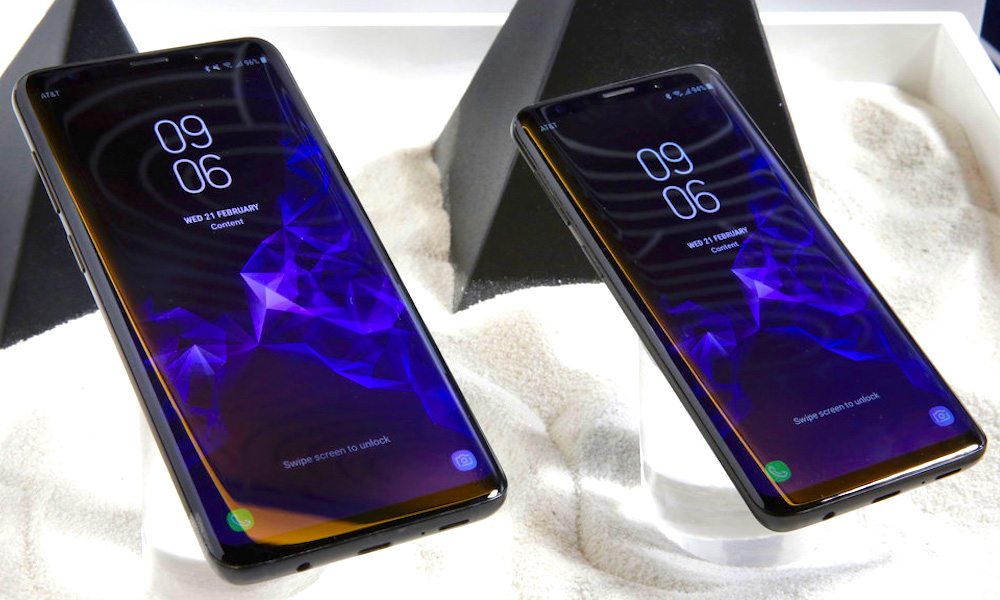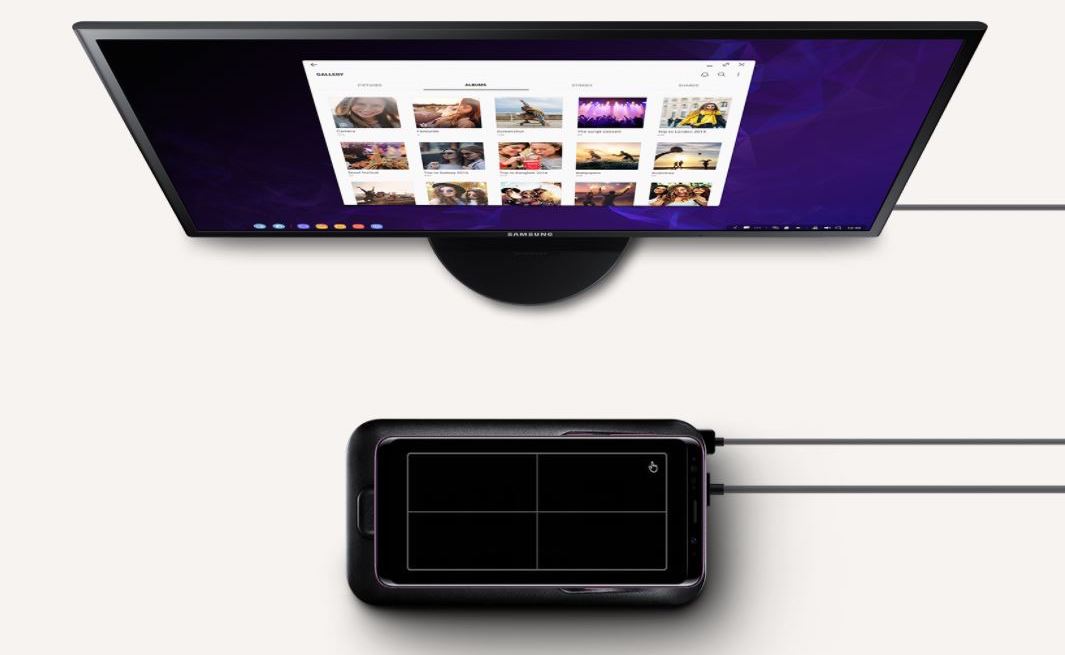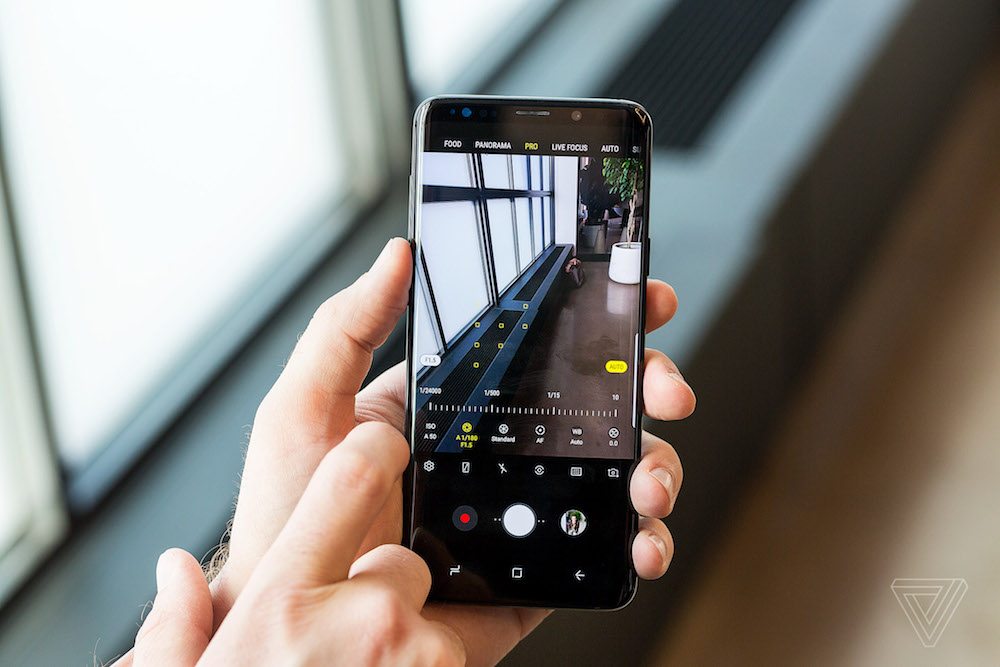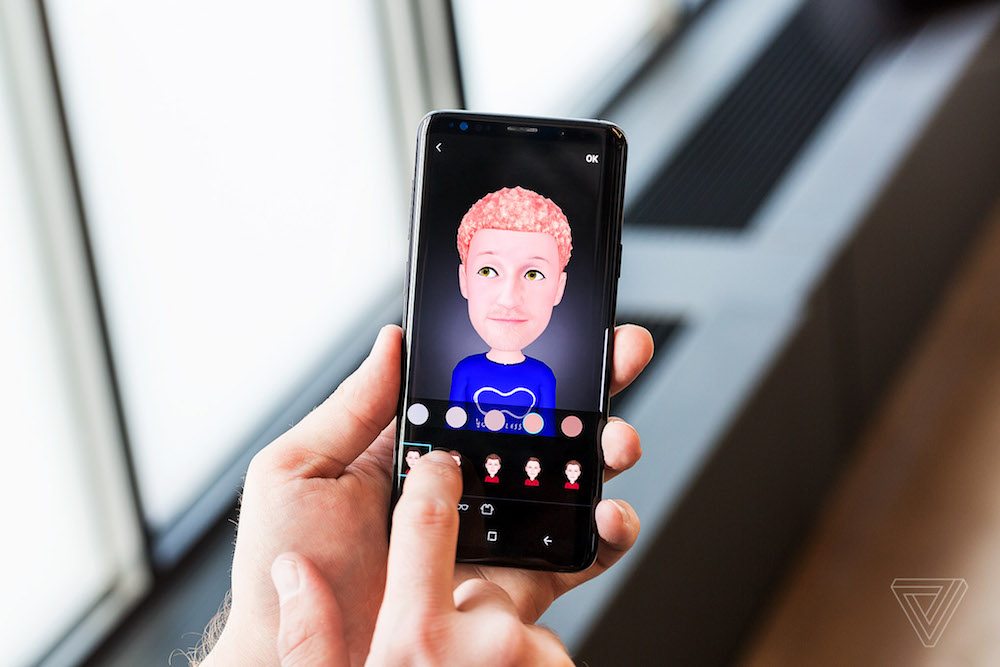5 Samsung Galaxy S9 Features iPhone Doesn’t Have (Yet)
 Credit: AP Photo / Richard Drew
Credit: AP Photo / Richard Drew
Samsung over the weekend took the wraps off its next-generation Galaxy S9 and S9+ smartphone flagships. While the handsets look nearly identical to their predecessors, the company's S9 duo flaunts a myriad of new and highly-advanced features, which Samsung hopes will make them appeal to consumers as a 'better alternative' to Apple’s iPhone X.
But how do the Galaxy S9 and S9+ truly stack up against its closest competition? Here, we’ll take a further look at 5 of the Galaxy S9’s most promising new features which, at least for the time being, are unfortunately unavailable to iPhone owners.
Use the Right Arrow to Browse 5 Samsung Galaxy S9 Features iPhone Doesn’t Have (Yet)
5 DeX Connectivity

Introduced in 2017, Samsung DeX (short for Desktop eXperience) is the company’s proprietary hardware/software platform which allows Galaxy S8, Note 8, and S9 devices to be seamlessly docked and connected with a PC, offering users a unique ‘desktop quality’ smartphone experience enhanced for the bigger screen.
While it’s certainly not without its various quirks and caveats, Samsung upgraded DeX slightly for the Galaxy S9 and S9+, with a new trackpad feature that allows users to navigate their big screen using the device's sAMOLED display as a touch-capacitive mouse.
The underlying DeX UI also received some notable freshening up this year.. And although we can see this feature coming in handy for those who want to expand their available space, nothing even remotely like it, unfortunately, is available for iPhone users yet.. Though we’ve heard rumors that Apple might be working on an eerily similar ‘Dockable iPhone’ concept.
4 Advanced Variable Aperture Camera

Among the Galaxy S9 and S9+’s most promising new features is their stellar camera hardware, which not only flaunt advanced capabilities like Optical Image Stabilization (OIS), an incredible f/1.5 to f/2.4 ‘variable aperture’, and more, but are built around the company’s newest 12 MP ‘Super Speed Dual Pixel’ lens systems.
Notably, the Galaxy S9 and S9+ are the first smartphones to market featuring these advanced camera optics, which are traditionally reserved for high-end standalone camera hardware. The company claimed that when coupled with its all-new ‘multi-frame processing algorithm’, these features allow the S9 flagships to capture “better low-light photos with lower noise levels.”
3 AR Emoji

As we were expecting, Samsung introduced its own 3D emoji animation feature, dubbed AR Emoji, which was created to directly compete with Apple’s Animoji function available to iPhone X users.
Though they seem so ostensibly similar, in concept, AR Emoji and Animoji are actually quite different.
Samsung’s technology is designed to generate 3D models based on real faces, whereas Animoji generates pre-existing emoticon characters such as cat, robot, and unicorn.
According to AppleInsider, AR Emoji relies on advanced machine learning to analyze 2D images of a user's face, which are used to map out “more than 100 facial features” in order to create a 3D model. “Able to be shown performing a number of emotes, such as winks and nods, it can turn these animations into a video, a GIF, or a sticker that can be used in most third-party messaging platforms.”
Depending on your perspective, it may appear as if Samsung was blatantly attempting to rip-off Animoji — however it’s worth pointing out that Galaxy S9's front-facing camera hardware is still much, much less advanced than Apple’s TrueDepth camera system — and so you’re getting a much different product in the end.
2 Ultra Slow-Motion
While Apple’s iPhone X boasts impressive slow-motion video capabilities, allowing users to record clips at 240 frames per second (fps) @ 1080p, Samsung’s Galaxy S9 and S9+ allow users to capture short (0.2 second) but impressively slow video clips at a whopping 960 fps in 720p HD.
And while 0.2 seconds may not seem like enough time to capture anything substantial, test results have so far revealed that Samsung’s feature renders impressive results.
1 Edge-to-Edge(ier) Design

iPhone X is Apple’s first smartphone device to nearly do away with the thick, ghastly bezels which have encompassed iPhone displays from the get-go. Sadly, when we consider the obtrusiveness of the iPhone X’s notch, in particular, the handset doesn’t exactly give off the full-on edge-to-edge image we’d been lead to believe it would.
Samsung’s S9 and S9+, however, boast among of the most impressive “edge-to-edge” displays currently available on a smartphone. Not only do they feature a staggering 92 percent screen-to-body ratio, but the company’s gorgeous, 5.8- and 6.2-inch AMOLED ‘Infiniti Displays’ are designed to truly stretch (from edge to edge) across the whole front surface of the device.
Embarrassingly, Samsung’s notch is even much smaller than Apple’s — although the latter’s TrueDepth camera system does run circles around the S9’s camera tech.
